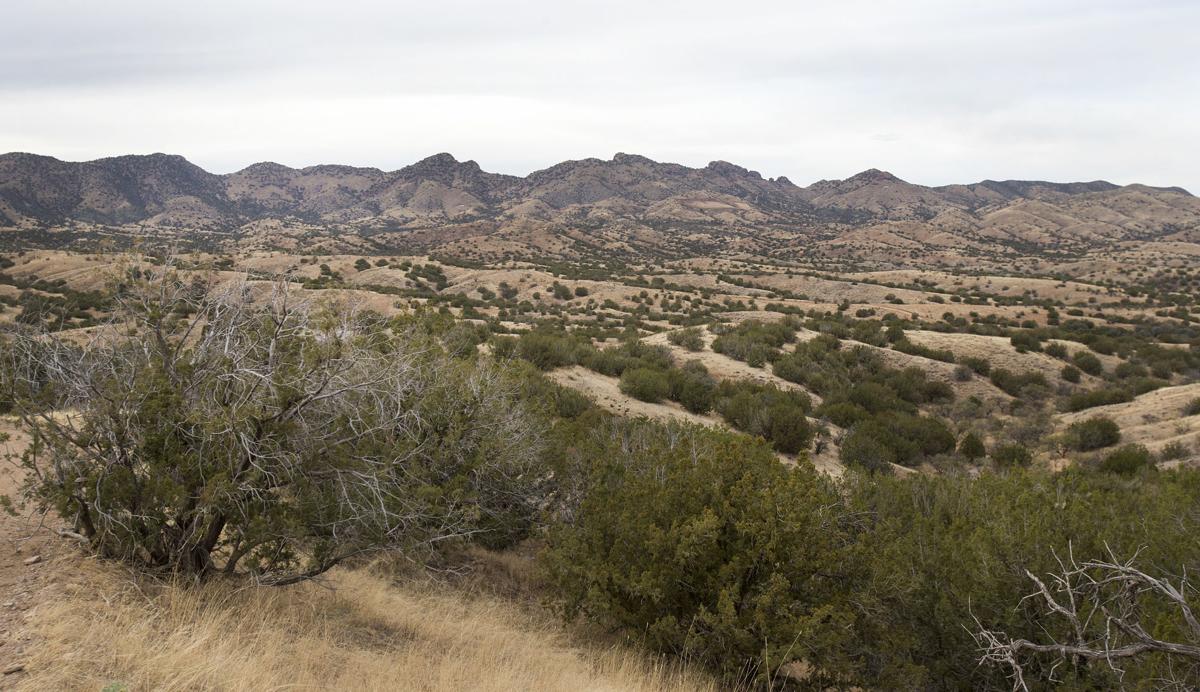A federal appeals court has affirmed a ruling that blocks Rosemont Copper Co.’s bid to dig a 6,500-foot-wide open pit mine in the Santa Rita Mountains about 30 miles southeast of Tucson.
In a split decision Thursday, a 9th Circuit Court of Appeals panel said the company certainly is free to dig the proposed, 3,000-foot-deep Rosemont Mine pit on about 950 acres to mine more than 5 billion pounds of copper. That right to mine on the land the company owns and on U.S. Forest Service land is guaranteed by federal mining law, said Judge William Fletcher, writing for the panel’s majority.
What the company can’t do, he said, is dump the estimated 1.9 billion tons of waste rock the excavation would produce on another 2,447 acres of Forest Service land. That pile “would occupy the land in perpetuity,” in an accumulation that over the mine’s 25-year life would be 700 feet deep, Fletcher said.
The 9th Circuit’s decision upholds a 2019 ruling by U.S. District Court Judge James Soto in Tucson.
In a prepared statement, Toronto-based Hudbay Minerals Inc., parent company of Rosemont Copper, said it was reviewing the decision.
But it said it will “continue to pursue its alternate plan to advance its Copper World project,’’ on land it owns outright in the Santa Ritas. The company has started some construction on that alternate site, where it envisions five open pits. That site is now the subject of a separate lawsuit, however, over whether the construction would affect the flow of streams.
Case to be further hashed out
Thursday’s ruling may not be the last word, and not just because the company — and the Forest Service, which has sided with it — could seek further appeal.
Fletcher sent the case back to Soto to determine if there is some legal way for Rosemont to acquire the rights to dump on Forest Service land.
The federal Mining Law of 1872 permits companies to use only land where they have valid mining claims for such waste, Fletcher wrote.
Also, such claims to use the public lands can be made only when there is evidence valuable minerals have been found on the property. That is not the case here.
The appellate judges rejected arguments by attorneys for Rosemont and the federal government that the company does not have to confine its waste to only the land under which there are actual mineral deposits.
Fletcher also faulted the Forest Service for issuing the permit to let Rosemont dump its waste rock on that additional 2,447 acres based on its assumption that the company’s claims for the land without the minerals was valid.
The ruling was not unanimous. Judge Danielle Forrest said she believes the Forest Service was within its rights to adopt regulations to fill in the gaps left by the mining law.
Options for company?
Thursday’s ruling is the latest in what has been a multiyear — and multilawsuit — attempt by Rosemont to start mining the lands on which the court said the company has “undisputed mining claims.’’ The Rosemont Mine would produce about 5.88 billion pounds of copper over its life, another 194 million pounds of molybdenum and 80 million ounces of silver.
Soto’s 2019 ruling came two years after Save the Scenic Santa Ritas, the Center for Biological Diversity, the Arizona Mining Reform Coalition and the Sierra Club’s Grand Canyon Chapter filed a lawsuit challenging the Forest Service’s approval of the mine.
The question now is whether Rosemont has options.
Attorney Allison Melton of the Center for Biological Diversity said there are elements of the federal mining law of 1872 that do allow mining companies to occupy land for “mill sites.’’
But there are issues with that.
In general, Fletcher noted, the law limits individual mill sites to just 5 acres. It does, however, permit those with mining claims to stake multiple mill sites if “reasonably necessary’’ for their mining operations.
Heidi McIntosh, with Earthjustice, said the amount of land Rosemont would need on which to dump nearly 2 billion tons of waste is not what’s contemplated by the law.
“What Congress did at the time was to give prospectors who were willing to go out there and try to develop mines a certain amount of land,’’ she said.
“At the time, they contemplated that miners would go out and do an 1872-size mine and that the lands they would get to do that would be enough to store any kind of waste or tailings that they generated,’’ McIntosh continued. “Of course, if you’re talking about a mile-wide pit that Rosemont is, they’ve just kind of outgrown the mining law.’’
Amending law is up to Congress
Fletcher acknowledged that many people have said the 1872 law must be upgraded.
“But amendment of the Mining Law is a task for Congress, not for the (Forest) Service, and certainly not for us,’’ he wrote.
McIntosh, who represents several Native American tribes who filed their own lawsuit against the mine, said there are things Rosemont could do and not run afoul of the law.
“They could truck off their waste,’’ she said. “They could find some private land and convince the owner to sell it to them. They just can’t offload their problem onto the public and the tribes.’’
She said it will now be up to Rosemont and the Forest Service to make their case to Soto that they can operate the mine within confines of the law.





